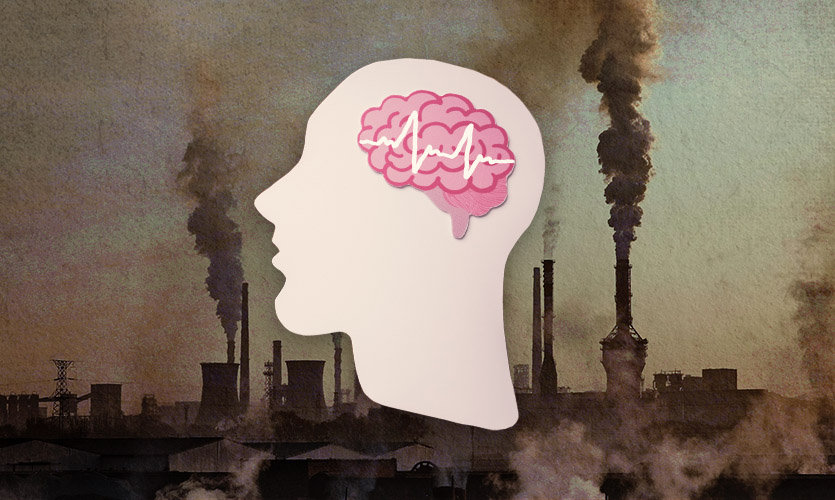According to the National Crime Records Bureau (NCRB) data, around 24,000 children aged 14 to 18 years old committed suicide between 2017 and 2019. Over 3,000 of these incidents were ascribed to academic failure, followed by romantic relationships and illnesses (over 2,000). Overall suicides in the country have been increasing since 2017, when the country’s suicide rate was 9.9 percent with 1,29,887 suicides. In 2018, the number of suicides increased by 10.2 percent reaching 1,34,516 and in 2019, it increased by 10.4 percent to 1,39,123.
Maharashtra recorded the highest number of student suicides in 2018, with 1,448 cases – about four suicides a day. It was followed by Tamil Nadu with 953 suicides, and Madhya Pradesh with 862 suicides. The number of students who committed suicide increased from 27,990 to 28,913 between 2004 and 2008, and from 36,913 to 36,990 between 2009 and 2013. An increase of 26 percent from the preceding 5-year period, to 46,554 cases, was seen between 2014-18. Based on a survey released by Lokniti-CSDS in 2017, four out of ten students reported that they were depressed. Another finding from the survey demonstrated that one in four youths in the age group 15-34 years suffered from depression, loneliness, worthlessness and/or suicidal thoughts. Majority of them had experienced suicidal thoughts at least once.
The number of suicides has increased steadily each year, which has led to fears among child rights advocates as to what this figure will look like with the incorporation of statistics during the pandemic in 2020 and 2021. The causes cited also included drug abuse, poverty, idol worship, unemployment, and pregnancy. The suicide rate in India’s 15-29 years age range is among the highest in the world, according to a Lancet research published in 2009. The report says that among men, 40 percent of suicides were by individuals aged 15-29 years, while for women it was almost 60 percent. Another study done by Lancet reports that Southeast Asia accounts for roughly 40 percent of the estimated 800,000 annual suicide deaths globally.
The survey asked the youth participants whether they had ever consulted a doctor for mental problems. Only about 6 percent reported doing so, a figure that is alarming given that the survey also finds 55 percent of the youth to be highly anxious and about 31 percent to be having high or moderate emotional distress. While it is true, as the survey finds, that the more anxious and the more emotionally distressed are more likely to have consulted a psychiatrist, the figures even among them are alarmingly low. Among very anxious children, only 8 percent have consulted a doctor and among the highly distressed, only 18 percent or about one in five have done so.
Sadness, disorientation, anger, tension, and concentration and hyperactivity difficulties were all related to suicide fatalities. Puja Marwaha, CEO of Child Rights and You, told PTI that suicide may seem like a solution for certain issues to some adolescents and children.
The findings raise concerns about the seemingly growing mental health crises among youngsters and the lack of a solid infrastructure to provide comprehensive care and support. A student in India commits suicide per hour, according to NCRB data from 2015. Teenagers attempting to get admission to prestigious educational institutions have been known to commit suicide in coaching centres such as Kota in Rajasthan. It is therefore disastrous to use exams as a measure of success in India, where education is itself a hard-won opportunity.
Activists fear that the transition to online schooling during the pandemic may have exacerbated the situation. Child rights experts urge for life skills training to be included in school curricula, as well as improved mental health care and rehabilitation in light of lockdown, pandemic anxiety, and online education problems.
“Not enough effort has been made to help them see through it with timely professional services and support and mitigate its worst fallouts,” Akhila Sivadas, executive director, Centre for Advocacy and Research, told PTI.
Suicide Prevention Measures
As a first step, improved statistics on suicide mortality and suicide attempts must be compiled. Health facilities should keep an eye out for suicide attempts and self-harm cases, as well as continue to improve suicide research so policy and law makers have a better sense of how to address this complex issue.
As a second consideration, suicide prevention strategy should take into account the considerable regional and state-level variance in suicide rates.
Suicide prevention planning should also take gender and age into account. The prevalence of female suicides in India is very high. While it is a good sign that the rate of female suicides has dropped marginally since 1990, the male suicides rate has risen dramatically. An expanded view of male suicides, which goes beyond the highly politicised topic of farmer suicides is necessary. Additionally, the reduction of female suicide rates might be aided by initiatives that address the risk factors linked with male suicides, such as alcohol dependency.
In India, suicide prevention should be grounded in a broader public health approach that takes into account the socioeconomic, cultural, and political determinants of suicide. It is a complicated public health disaster in desperate need of solution.










